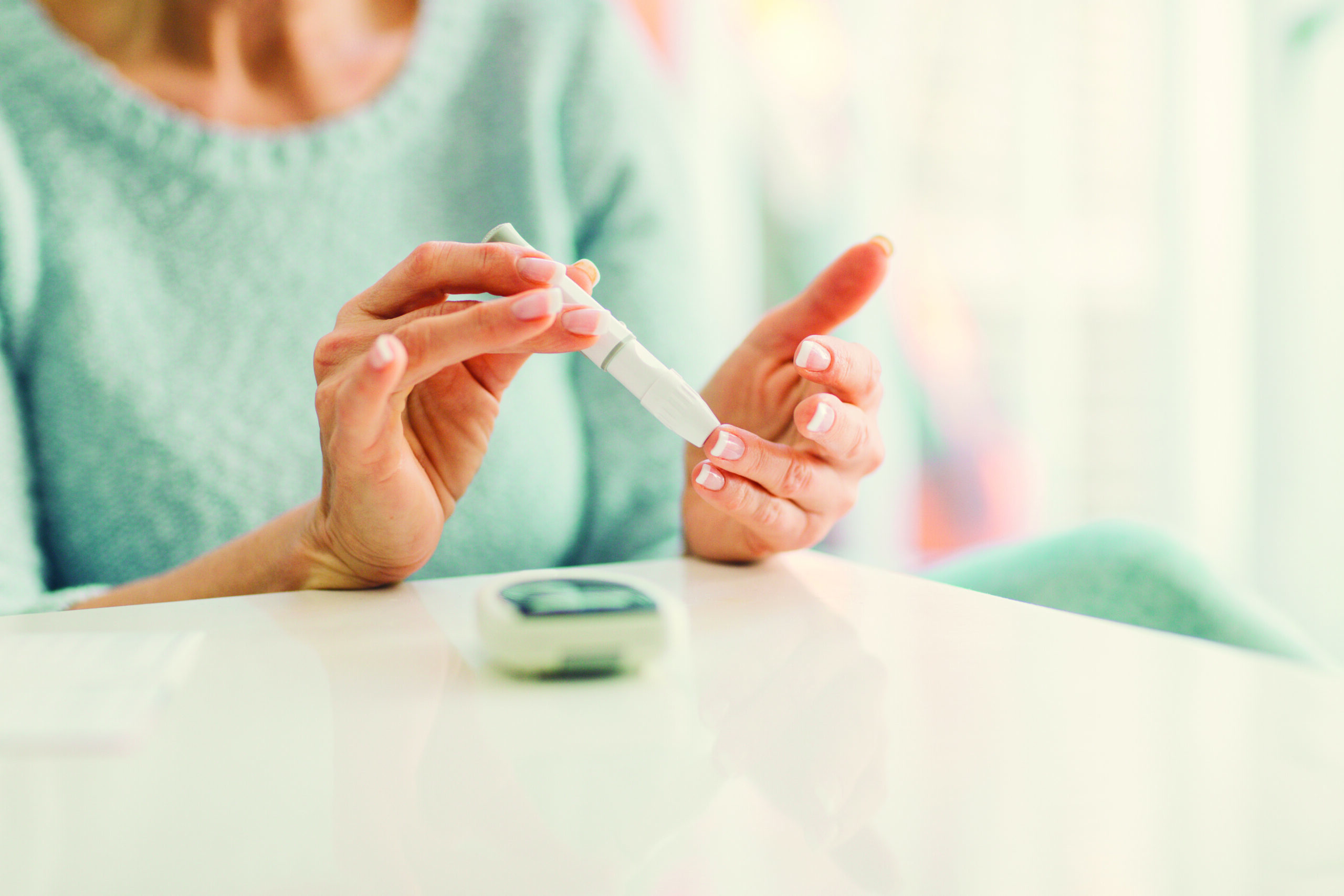by Colleen M. Story, Chaffin Luhana
The National Institute of Diabetes and Digestive and Kidney Diseases (NIDDKD) estimates that 60 to 70 million people are affected by digestive diseases in the U.S. These include serious conditions like gallstones, ulcers, and diverticular disease, as well as more common ailments like chronic constipation, heartburn, and gastroesophageal reflux disease (GERD).
Many considered it a blessing of modern medicine when the antacid medication Zantac was approved as a prescription drug in 1983. Part of a class of medications known as histamine H2-receptor antagonists (H2 blockers), Zantac was designed to decrease the amount of acid produced in the stomach and was used to treat gastric ulcers, heartburn, acid indigestion, sour stomach and other gastrointestinal conditions.
Blockbuster Sales
Zantac was wildly successful, reaching $1 billion in annual sales by the end of 1986. It became available over the counter a decade later, with generic versions (ranitidine) appearing the following year. The public considered Zantac safe enough for pregnant women and children. Despite competition from generics, Zantac remained one of the top antacid tablet brands in the U.S. Thousands made the medication part of their daily lives, using it to manage their digestive conditions on an ongoing basis.
The Recalls
Then on September 13, 2019, the FDA released a statement that shocked the nation. The agency warned healthcare providers and patients that some ranitidine medications, including Zantac, contained a carcinogenic chemical called N-nitrosodimethylamine (NDMA) at “low levels.” NDMA is a known environmental contaminant, but its discovery in this common antacid medication came as a surprise to the public.
The warning raised concerns among hundreds of thousands of people. Did this mean Zantac and generic ranitidine could increase the risk of cancer? Was the presence of NDMA, an “impurity” as the FDA termed it, found only in some lots because of a manufacturing issue, or was there another, more potentially dangerous explanation?
And perhaps the most unsettling question: Was this just a recent fluke, or had the NDMA been present in Zantac from the start?
What is NDMA?
NDMA is a chemical that was used years ago to make rocket fuel but was discontinued after traces were found contaminating the environment around the rocket fuel manufacturing plants. Today, it is commercially produced only for use in laboratories as a substance meant to induce cancer in animal studies.
The International Agency for Research on Cancer (IARC) and the Environmental Protection Agency (EPA) have classified NDMA as probably carcinogenic to humans, based on evidence gleaned from animal experiments. The World Health Organization (WHO) states that the studies that have been done so far can’t be used to “derive a quantitative risk of cancer,” though they do support the assumption that NDMA is positively associated with at least gastric or colorectal cancer.
Though NDMA is no longer produced in the U.S. outside of the research lab, it can still be formed as a byproduct of industrial processes in tanneries, pesticide manufacturing plants, rubber and tire manufacturing plants, fish-processing facilities, foundries, and dye manufacturing plants. It is also an unintended byproduct from chlorinating wastewater and drinking water at plants that use chloramines for disinfection.
It’s not a comforting thought that we might be eating and drinking a potential carcinogen. However, according to the Centers for Disease Control and Prevention (CDC), humans can be exposed to NDMA through the environment, tobacco smoke and chewing tobacco, toiletry and cosmetic products, household items like detergents and pesticides, certain foods, including cured meats, beer, fish, cheese, and other items. Similarly, the Environmental Protection Agency (EPA) explains that NDMA exposure may occur in the human diet by ingesting food, that contains nitrosamines, including smoked and cured meats and fish, food that contains alkylamines, contaminated water, and malt beverages, like beer and whiskey.
Considering what we already know about diet and NDMA, one might think that consumers should have been warned that the ranitidine molecule itself—the active ingredient in Zantac—contains an alkylamine, or potential NDMA-forming agent. It’s called “dimethylamine (DMA),” and it’s naturally present in the molecule, along with a nitrite. Combine the two and what do you get? NDMA.
Online Pharmacy Finds NDMA in Zantac Samples
Online pharmacy Valisure was the first to detect NDMA during routine testing of Zantac samples. The company notified the FDA of its findings in June 2019, but the FDA did not release the information to the public at that time.
On September 9, 2019, Valisure submitted a Citizen’s Petition to the FDA, urging the agency to recall all forms of ranitidine and Zantac from the market. Valisure CEO, David Light, explained in the petition the reasoning behind the request: “Valisure has detected NDMA in excess of 3,000,000 ng [nanograms] per tablet with analyzing ranitidine products, likely due to an inherent instability of the ranitidine molecule.”
Light went on to show that ranitidine itself could produce NDMA: “The ranitidine molecule contains both a nitrite and a dimethylamine (‘DMA’) group which are well known to combine to form NDMA.”
Valisure’s tests suggested that ranitidine could “react with itself” under standard conditions resembling those that occur during digestion to produce NDMA at levels higher than the acceptable daily intake. The FDA’s current acceptable daily limit is 96 ng/day—much lower than the 3 million ng Valisure detected during testing.
The FDA later questioned Valisure’s test results, stating the company used heat, which can generate unnaturally high levels of NDMA from ranitidine products. The FDA conducted its own tests on the products, using liquid chromatography-high resolution mass spectrometry (LC-HRMS). Though the results showed much lower levels of NDMA than those seen in Valisure’s tests, levels were still higher than the FDA’s acceptable limit.
The FDA advised manufacturers to test their products using the LC-HRMS method, and many product recalls followed. Generic manufacturer Sandoz was the first to pull 14 lots of prescription ranitidine from the market, followed by generic manufacturer Apotex Corp., which withdrew products labeled by Walmart, Walgreens, and Rite-Aid.
In October 2019, Zantac manufacturer, Sanofi, initiated a voluntary recall of all Zantac over-the-counter products in the U.S. The company stated on its website, “Sanofi has made the decision to conduct the voluntary recall as the investigation continues.”
Meanwhile, the FDA continued to label NDMA as an “impurity,” while Valisure argued that its testing combined with other scientific research indicated the drug produced NDMA “in the conditions representative of those in the human body and builds a compelling case for ranitidine being a likely human carcinogen.”
Where Is the NDMA in Zantac (Ranitidine) Coming From?
The FDA has yet to state what’s causing the NDMA to show up in Zantac and generic ranitidine. In its communications, the word “impurity” is used repeatedly, perhaps because of a similar series of cases in 2018, when the FDA detected NDMA in blood pressure medications. However, studies seem to support that the ranitidine molecule itself may be to blame.
Back in July 2018, the FDA released a statement alerting health care professionals and patients of a voluntary recall of certain medications containing the active ingredient valsartan, used to treat high blood pressure and heart failure. NDMA had been detected in some but not all of the products. The FDA labeled the carcinogen an “impurity” because its presence seemed to be related to changes in the way the active pharmaceutical substance (API) was manufactured.
Among those recalling valsartan medications included Major Pharmaceuticals, Solco Healthcare and Teva Pharmaceuticals Industries, Ltd. The FDA later explained that a Chinese company, Zhejiang Huahai Pharmaceuticals (ZHP), had manufactured the valsartan in these products.
“The presence of the potentially cancer-causing NDMA was unexpected,” the FDA stated, “and the agency believes the NDMA is related to changes in the way the active substance was manufactured.” The impurity may have been in the valsartan products for as long as four years, with FDA scientists estimating that if 8,000 people took the highest valsartan dose (320 mg) of the recalled batches daily for the full four years, there might be one additional case of cancer among those people.
To calm consumer worries, the FDA subsequently published a list of products not affected by the recall and continued to update the public on those companies that did recall products. The agency advised manufacturers to evaluate their manufacturing processes and any changes to those processes to detect any unsafe impurities.
On August 30, 2018, FDA Commissioner, Scott Gottlieb, M.D., issued a statement concerning the agency’s ongoing investigation. He noted that four manufacturers using valsartan from ZHP had been identified and contacted about testing for NDMA. At that time, the FDA continued to believe that the impurity was the result of changes made to ZHP’s manufacturing process.
Soon, other nitrosamine impurities were discovered in other lots of another blood pressure medication—losartan—which again, had been manufactured by ZHP. On September 28, 2018, the FDA placed ZHP on “import alert,” and in December 2018, sent a warning letter to company management, outlining several manufacturing violations at the Chuannan facility.
In January 2019, Commissioner Gottlieb issued another statement reiterating the fact that only some of these medications contained the NDMA impurity, and that overall exposure “appears to be small.” Investigations had determined that the impurities “may be generated when specific chemicals and reaction conditions are present in the manufacturing process of the drug’s API, and may also result from the reuse of materials, such as solvents.”
The FDA continues its investigation to this day and has sent additional warning letters to other companies supplying these drugs for violating current good manufacturing practices. The agency also continues to update the public with a list of recalled and safe medications.
Thus, it was with this background that the FDA approached the discovery of NDMA in Zantac and generic ranitidine. So far, however, no manufacturing process or supplier of the drug has been identified as being linked to the source of the problem. Instead, studies seem to support what Valisure has said all along—that the ranitidine molecule itself may be to blame.
Evidence Shows that Ranitidine Breakdown Produces NDMA
Valisure CEO, David Light, argued that ranitidine was unstable, and could break down to form NDMA during human ingestion. He referred to supportive evidence from a 2016 study conducted at Stanford University.
Previous studies demonstrated that amines could form N-nitrosamines when exposed to nitrite in the stomach. Similar N-nitrosamine formation from ranitidine, however, had not been demonstrated under these conditions, so the scientists at Stanford decided to test it.
First, they performed laboratory studies that confirmed the production of NDMA when ranitidine broke down under conditions similar to those present in the human digestive system. Then they went a step further and tested their theory in actual humans.
For the experiment, they recruited five female and five male volunteers. They collected urine samples from those volunteers both before and after consumption of 150 mg ranitidine. Results showed that following ranitidine intake, the urinary NDMA excreted increased 400-fold from 110 to 47,600 ng, while total N-nitrosamines increased 5-fold.
The actual exposure to NDMA, the scientists added, was likely much higher, since most NDMA is metabolized in the body, with only a small percentage excreted in the urine.
In its petition to the FDA, Valisure also referred to a 2003 study in which researchers examined NDMA as a drinking water contaminant, resulting from reactions occurring during chlorination or from direct industrial contamination. In that study, the scientists noted other potential sources of NDMA contamination, including fungicides, herbicides, and ranitidine, with Zantac mentioned specifically by name.
Even as far back as 1983, published studies provided evidence of the carcinogenic nature of ranitidine. In one animal study published that year in Carcinogenesis, scientists theorized about the possible formation of nitrosamines during ranitidine digestion, noting that doses of 175 mg ranitidine and higher resulted in DNA fragmentation in the liver or digestive system—fragmentation that could lead to cancer.
Despite these and other scientific publications, neither the public nor the FDA ever received warnings from Zantac manufacturers about the potential dangers associated with ranitidine.
Public Understandably Concerned About Zantac Risks
A series of recall announcements coupled with reports from the FDA and the media have brought attention to the potential risks associated with Zantac and ranitidine medications, and they’re understandably upset about it.
Many individuals who took Zantac for years and were then diagnosed with cancer have filed lawsuits against the manufacturers. Others have filed class-action cases seeking compensation for individuals who took the medication and must now undergo additional medical monitoring just to be safe.
Manufacturers are feeling the heat, and though many have withdrawn their products from the market, some ranitidine remains available in the U.S. The FDA does not have the authority to force all manufacturers to recall the drug. Considering the potential dangers, some lawmakers now want to change that.
Lawmakers Seek Action on Ranitidine
At a recent press conference at the U.S. Capitol, Valisure CEO David Light spoke in favor of a bill proposed by U.S. Representative Rosa DeLauro (D-CT). Called the “Recall Unsafe Drugs Act,” it would give the FDA mandatory recall authority over drugs. Representative DeLauro introduced the bill back in 2017, but after the news about Zantac, reintroduced it on January 10, 2020, while calling on the FDA to ban sales of ranitidine.
“The FDA,” she said, “once the gold standard, has failed to act on ranitidine. As I have seen for far too long, the FDA often errs on the side of the industry at the expense of public health.”
The month before, DeLauro sent a letter to Dr. Stephen Han, the current FDA commissioner, expressing her concern about ranitidine. “Valisure’s data,” she wrote, “in combination with four decades of scientific research, strongly suggests that ranitidine is a fundamentally unstable molecule and all products containing this drug have a risk of cancer.”
Valisure has remained at the forefront of the issue, and together with Memorial Sloan Kettering Cancer Center and Stanford University, recently worked on a new study that was scheduled to be published in the scientific journal JAMA on January 10, 2020. That study, however, which concerned the potential connection between ranitidine and NDMA, has been withheld for further review—a highly unusual move, according to Light.
DeLauro echoed Light’s concern, stating she “would be disappointed” if it should be later discovered that JAMA management was being “inappropriately pressured” to withhold the study. A statement from JAMA on the action read, “Further review of the paper is needed.”
Zantac Lawsuits Increasing with New Centralized Litigation
Meanwhile, litigation against Zantac manufacturers is growing, and on November 4, 2019, plaintiffs filed a motion with the U.S. Judicial Panel on Multidistrict Litigation (JPML) to consolidate all federally filed Zantac lawsuits into one court for more efficient pre-trial proceedings. The defendants agreed that consolidation would be prudent, though the parties disagreed on the best location for the potential MDL.
The JPML heard arguments regarding consolidation on January 30, 2020, in Tampa, Florida, and on February 6, 2020, ordered that all Zantac federally filed lawsuits be centralized in the U.S. District Court for the Southern District of Florida, under the direction of District Judge Robin L. Rosenberg. The Order included the transfer of 15 pending cases, with the parties identifying an additional 126 related actions pending in 21 districts.
Meanwhile, the FDA continues to provide updates about ranitidine recalls. On January 8, 2020, the agency notified the public that Appco Pharma LLC and Northwind Pharmaceuticals were recalling prescription ranitidine medications. To date, there has not been a nationwide recall of all ranitidine drugs in the U.S. Other countries have taken that step, including Canada, France, Italy, Germany, Pakistan, Switzerland, and Egypt.
According to a report in USA Today, the FDA conducted tests on how ranitidine reacts with fluids in the stomach and intestines but did not find evidence that Zantac formed carcinogens. Janet Woodcock, director of the FDA’s Center for Drug Evaluation and Research, told the House Committee on Energy and Commerce back in October that the agency’s chemists believe the carcinogen is formed when the ranitidine molecule reacts with something during the manufacturing process, in the finished dosage form, or during storage.
This remains a possibility. Testing by an Alameda, California-based independent laboratory called Emery Pharma showed that a combination of heat and time can raise levels of NDMA in ranitidine, according to a report in Bloomberg. Emery CEO, Ron Najafi, noted in a phone interview that the more Zantac is exposed to heat, the more NDMA it can generate, raising concerns that the drug could develop NDMA while in transport, in a hot car or delivery truck, or even while sitting in a cupboard at someone’s house.
In response to the findings, Emery also filed a Citizen’s Petition with the FDA, asking the agency to suspend sales of all products containing ranitidine and to recall those already on the market to require stability testing. The Lab suggested the medicine be shipped in temperature-controlled vehicles, and that the product label alert users to the possibility of the drug producing potential cancer-causing byproducts if exposed to heat.
Individuals who took Zantac products for years and then developed cancer, along with those concerned about their future health, may seek compensation in court, where discovery processes are likely to reveal exactly what the manufacturers knew and when they knew it.
It does bear considering that Zantac has been on the market since 1983. If, as Valisure and others believe, NDMA has been present in the drug since that time, what compensation is enough for all the thousands of lives that may have been affected? As the litigation progresses, consumers will hopefully get an answer to this question and also how it is possible for a gold standard drug like Zantac to be on the market for so many years and taken by millions of people without the companies addressing this issue and disclosing that its ingredients could convert to such high levels of the carcinogen NDMA.








Leave A Comment